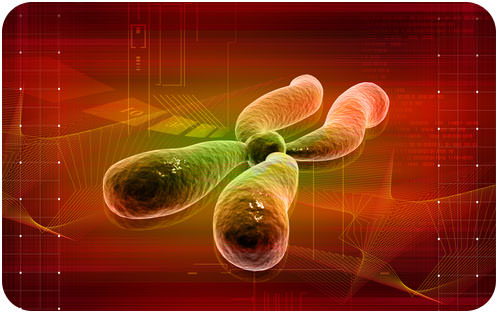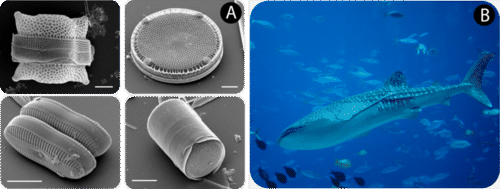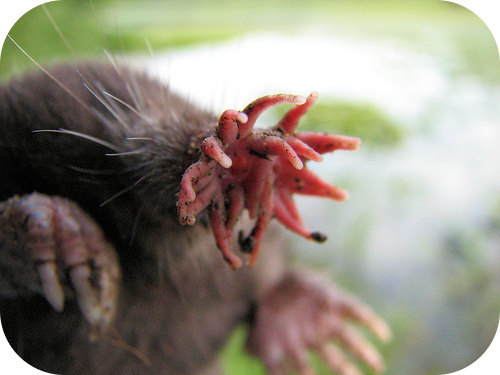1.16: Principles of Biology
- Page ID
- 1383
\( \newcommand{\vecs}[1]{\overset { \scriptstyle \rightharpoonup} {\mathbf{#1}} } \)
\( \newcommand{\vecd}[1]{\overset{-\!-\!\rightharpoonup}{\vphantom{a}\smash {#1}}} \)
\( \newcommand{\dsum}{\displaystyle\sum\limits} \)
\( \newcommand{\dint}{\displaystyle\int\limits} \)
\( \newcommand{\dlim}{\displaystyle\lim\limits} \)
\( \newcommand{\id}{\mathrm{id}}\) \( \newcommand{\Span}{\mathrm{span}}\)
( \newcommand{\kernel}{\mathrm{null}\,}\) \( \newcommand{\range}{\mathrm{range}\,}\)
\( \newcommand{\RealPart}{\mathrm{Re}}\) \( \newcommand{\ImaginaryPart}{\mathrm{Im}}\)
\( \newcommand{\Argument}{\mathrm{Arg}}\) \( \newcommand{\norm}[1]{\| #1 \|}\)
\( \newcommand{\inner}[2]{\langle #1, #2 \rangle}\)
\( \newcommand{\Span}{\mathrm{span}}\)
\( \newcommand{\id}{\mathrm{id}}\)
\( \newcommand{\Span}{\mathrm{span}}\)
\( \newcommand{\kernel}{\mathrm{null}\,}\)
\( \newcommand{\range}{\mathrm{range}\,}\)
\( \newcommand{\RealPart}{\mathrm{Re}}\)
\( \newcommand{\ImaginaryPart}{\mathrm{Im}}\)
\( \newcommand{\Argument}{\mathrm{Arg}}\)
\( \newcommand{\norm}[1]{\| #1 \|}\)
\( \newcommand{\inner}[2]{\langle #1, #2 \rangle}\)
\( \newcommand{\Span}{\mathrm{span}}\) \( \newcommand{\AA}{\unicode[.8,0]{x212B}}\)
\( \newcommand{\vectorA}[1]{\vec{#1}} % arrow\)
\( \newcommand{\vectorAt}[1]{\vec{\text{#1}}} % arrow\)
\( \newcommand{\vectorB}[1]{\overset { \scriptstyle \rightharpoonup} {\mathbf{#1}} } \)
\( \newcommand{\vectorC}[1]{\textbf{#1}} \)
\( \newcommand{\vectorD}[1]{\overrightarrow{#1}} \)
\( \newcommand{\vectorDt}[1]{\overrightarrow{\text{#1}}} \)
\( \newcommand{\vectE}[1]{\overset{-\!-\!\rightharpoonup}{\vphantom{a}\smash{\mathbf {#1}}}} \)
\( \newcommand{\vecs}[1]{\overset { \scriptstyle \rightharpoonup} {\mathbf{#1}} } \)
\( \newcommand{\vecd}[1]{\overset{-\!-\!\rightharpoonup}{\vphantom{a}\smash {#1}}} \)
\(\newcommand{\avec}{\mathbf a}\) \(\newcommand{\bvec}{\mathbf b}\) \(\newcommand{\cvec}{\mathbf c}\) \(\newcommand{\dvec}{\mathbf d}\) \(\newcommand{\dtil}{\widetilde{\mathbf d}}\) \(\newcommand{\evec}{\mathbf e}\) \(\newcommand{\fvec}{\mathbf f}\) \(\newcommand{\nvec}{\mathbf n}\) \(\newcommand{\pvec}{\mathbf p}\) \(\newcommand{\qvec}{\mathbf q}\) \(\newcommand{\svec}{\mathbf s}\) \(\newcommand{\tvec}{\mathbf t}\) \(\newcommand{\uvec}{\mathbf u}\) \(\newcommand{\vvec}{\mathbf v}\) \(\newcommand{\wvec}{\mathbf w}\) \(\newcommand{\xvec}{\mathbf x}\) \(\newcommand{\yvec}{\mathbf y}\) \(\newcommand{\zvec}{\mathbf z}\) \(\newcommand{\rvec}{\mathbf r}\) \(\newcommand{\mvec}{\mathbf m}\) \(\newcommand{\zerovec}{\mathbf 0}\) \(\newcommand{\onevec}{\mathbf 1}\) \(\newcommand{\real}{\mathbb R}\) \(\newcommand{\twovec}[2]{\left[\begin{array}{r}#1 \\ #2 \end{array}\right]}\) \(\newcommand{\ctwovec}[2]{\left[\begin{array}{c}#1 \\ #2 \end{array}\right]}\) \(\newcommand{\threevec}[3]{\left[\begin{array}{r}#1 \\ #2 \\ #3 \end{array}\right]}\) \(\newcommand{\cthreevec}[3]{\left[\begin{array}{c}#1 \\ #2 \\ #3 \end{array}\right]}\) \(\newcommand{\fourvec}[4]{\left[\begin{array}{r}#1 \\ #2 \\ #3 \\ #4 \end{array}\right]}\) \(\newcommand{\cfourvec}[4]{\left[\begin{array}{c}#1 \\ #2 \\ #3 \\ #4 \end{array}\right]}\) \(\newcommand{\fivevec}[5]{\left[\begin{array}{r}#1 \\ #2 \\ #3 \\ #4 \\ #5 \\ \end{array}\right]}\) \(\newcommand{\cfivevec}[5]{\left[\begin{array}{c}#1 \\ #2 \\ #3 \\ #4 \\ #5 \\ \end{array}\right]}\) \(\newcommand{\mattwo}[4]{\left[\begin{array}{rr}#1 \amp #2 \\ #3 \amp #4 \\ \end{array}\right]}\) \(\newcommand{\laspan}[1]{\text{Span}\{#1\}}\) \(\newcommand{\bcal}{\cal B}\) \(\newcommand{\ccal}{\cal C}\) \(\newcommand{\scal}{\cal S}\) \(\newcommand{\wcal}{\cal W}\) \(\newcommand{\ecal}{\cal E}\) \(\newcommand{\coords}[2]{\left\{#1\right\}_{#2}}\) \(\newcommand{\gray}[1]{\color{gray}{#1}}\) \(\newcommand{\lgray}[1]{\color{lightgray}{#1}}\) \(\newcommand{\rank}{\operatorname{rank}}\) \(\newcommand{\row}{\text{Row}}\) \(\newcommand{\col}{\text{Col}}\) \(\renewcommand{\row}{\text{Row}}\) \(\newcommand{\nul}{\text{Nul}}\) \(\newcommand{\var}{\text{Var}}\) \(\newcommand{\corr}{\text{corr}}\) \(\newcommand{\len}[1]{\left|#1\right|}\) \(\newcommand{\bbar}{\overline{\bvec}}\) \(\newcommand{\bhat}{\widehat{\bvec}}\) \(\newcommand{\bperp}{\bvec^\perp}\) \(\newcommand{\xhat}{\widehat{\xvec}}\) \(\newcommand{\vhat}{\widehat{\vvec}}\) \(\newcommand{\uhat}{\widehat{\uvec}}\) \(\newcommand{\what}{\widehat{\wvec}}\) \(\newcommand{\Sighat}{\widehat{\Sigma}}\) \(\newcommand{\lt}{<}\) \(\newcommand{\gt}{>}\) \(\newcommand{\amp}{&}\) \(\definecolor{fillinmathshade}{gray}{0.9}\)
Reproduction, homeostasis, evolution, metabolism, heredity. What controls characteristics of life?
Characteristics of life are controlled by genes, which are passed from parents to offspring, and are located on chromosomes, like the one shown here, that are found in every cell. The gene theory is one of the unifying principles of biology.
Unifying Principles of Biology
Four unifying principles form the basis of biology. Whether biologists are interested in ancient life, the life of bacteria, or how humans could live on the moon, they base their overall understanding of biology on these four principles:
- cell theory
- gene theory
- homeostasis
- evolution
The Cell Theory
According to the cell theory, all living things are made up of cells, which is the structural unit of living organisms, and living cells always come from other living cells. In fact, each living thing begins life as a single cell. Some living things, such as bacteria, remain single-celled. Other living things, including plants and animals, grow and develop into many cells. Your own body is made up of an amazing 100 trillion cells! But even you—like all other living things—began life as a single cell.
 Tiny diatoms and whale sharks are all made of cells. Diatoms are about 20 µm in diameter and are made up of one cell, whereas whale sharks can measure up to 12 meters in length and are made up of billions of cells.
Tiny diatoms and whale sharks are all made of cells. Diatoms are about 20 µm in diameter and are made up of one cell, whereas whale sharks can measure up to 12 meters in length and are made up of billions of cells.The Gene Theory
The gene theory is the idea that the characteristics of living organisms are controlled by genes, which are passed from parents to their offspring. A gene is a segment of DNA that has the instructions to encode a protein. Genes are located on larger structures, called chromosomes, that are found inside every cell. Chromosomes, in turn, contain large molecules known as DNA (deoxyribonucleic acid). Molecules of DNA are encoded with instructions that tell cells what to do.
Homeostasis
Homeostasis, which is maintaining a stable internal environment or keeping things constant, is not just a characteristic of living things. It also applies to nature as a whole. Consider the concentration of oxygen in Earth’s atmosphere. Oxygen makes up 21% of the atmosphere, and this concentration is fairly constant. What keeps the concentration of oxygen constant? The answer is living things. Most living things need oxygen to survive, and when they breathe, they remove oxygen from the atmosphere. On the other hand, many living things, including plants, give off oxygen when they make food, and this adds oxygen to the atmosphere. The concentration of oxygen in the atmosphere is maintained mainly by the balance between these two processes.
Evolution
Evolution is a change in the characteristics of living things over time. Evolution occurs by a process called natural selection. In natural selection, some living things produce more offspring than others, so they pass more genes to the next generation than others do. Over many generations, this can lead to major changes in the characteristics of living things. Evolution explains how living things are changing today and how modern living things have descended from ancient life forms that no longer exist on Earth.
As living things evolve, they generally become better suited for their environment. This is because they evolve adaptations. An adaptation is a characteristic that helps a living thing survive and reproduce in a given environment. Look at the mole in Figure below. It has tentacles around its nose that it uses to sense things by touch. The mole lives underground in the soil, where it is always dark. However, by using its touch organ, it can detect even tiny food items in the soil in total darkness. The touch organ is an adaptation because it helps the mole survive in its dark, underground environment.
 This mole uses its star-shaped nose organ to sense food by touch in the dark. The mole’s very large front claws are also an adaptation for its life in the soil. Can you explain why?
This mole uses its star-shaped nose organ to sense food by touch in the dark. The mole’s very large front claws are also an adaptation for its life in the soil. Can you explain why?TED-Ed: How a Few Scientists Transformed the Way We Think About Disease
Tien Nguyen describes the work of several scientists who helped us arrive at the new idea of germ theory.
Summary
- The cell theory states that all living things are made up of cells, and living cells always come from other living cells.
- The gene theory states that the characteristics of living things are controlled by genes.
- Homeostasis is maintaining a constant internal environment.
- Evolution is a change in species over time.
Review
- Identify four unifying principles of modern biology.
- How are genes related to chromosomes?
- Define homeostasis.
- How are adaptations related to evolution?
| Image | Reference | Attributions |
 |
[Figure 1] | Credit: Flickr:gordonramsaysubmissions Source: http://www.flickr.com/photos/54397539@N06/5153972000/ License: CC BY 2.0 |
 |
[Figure 2] | Credit: (a) Mary Ann Tiffany, San Diego State University; (b) Flickr:istolethetv;Human cells: Image copyright Sebastian Kaulitzki, 2014; Onion cells: Umberto Salvagnin;Flickr:gordonramsaysubmissions Source: (a) commons.wikimedia.org/wiki/File:Diatoms.png ; (b) commons.wikimedia.org/wiki/File:Whale_Shark_diagonal.jpg ; Human cells: http://www.shutterstock.com ; Onion cells: http://www.flickr.com/photos/kaibara/3839720754 ; http://www.flickr.com/photos/54397539@N06/5153972000/ License: (A) CC BY 2.5; (B) CC BY 2.0; Human cells: License from Shutterstock; Onion cells: CC BY 2.0; CC BY 2.0 |
 |
[Figure 3] | Credit: Flickr:gordonramsaysubmissions;Human cells: Image copyright Sebastian Kaulitzki, 2014; Onion cells: Umberto Salvagnin Source: http://www.flickr.com/photos/54397539@N06/5153972000/ ; Human cells: http://www.shutterstock.com ; Onion cells: http://www.flickr.com/photos/kaibara/3839720754 License: CC BY 2.0; (Human Cells) License from Shutterstock; (Onion Cells) CC BY 2.0 |

